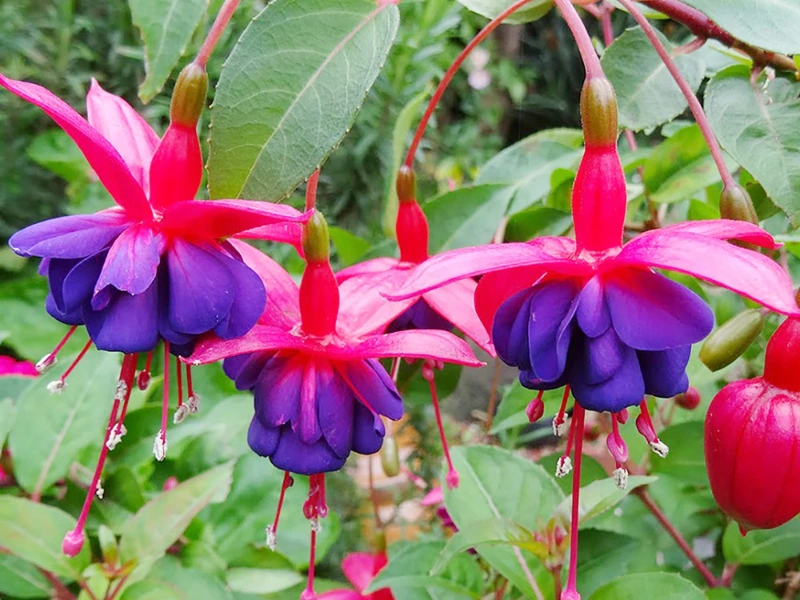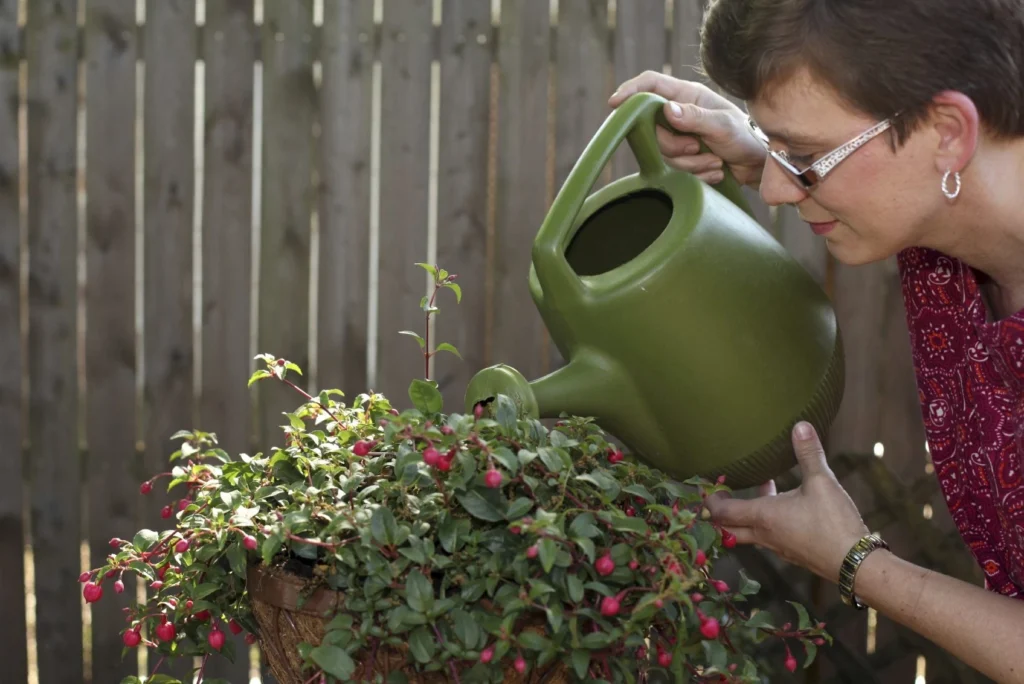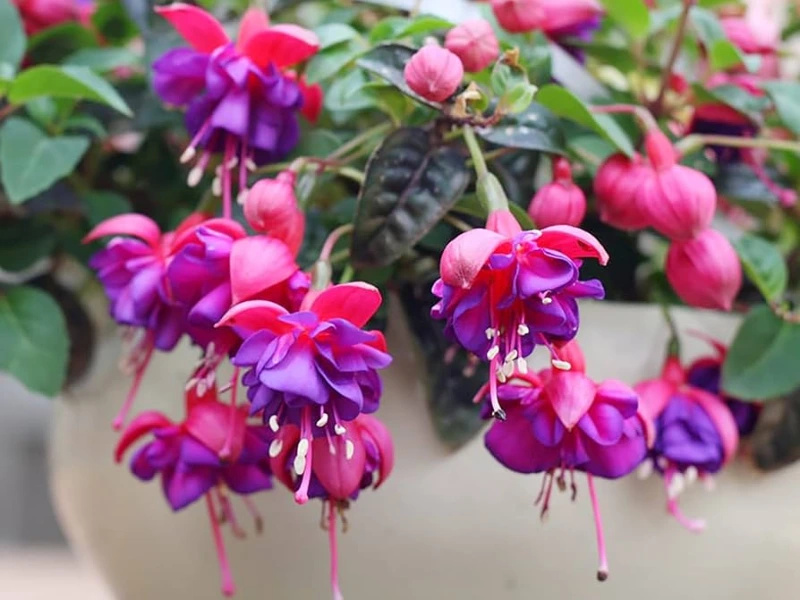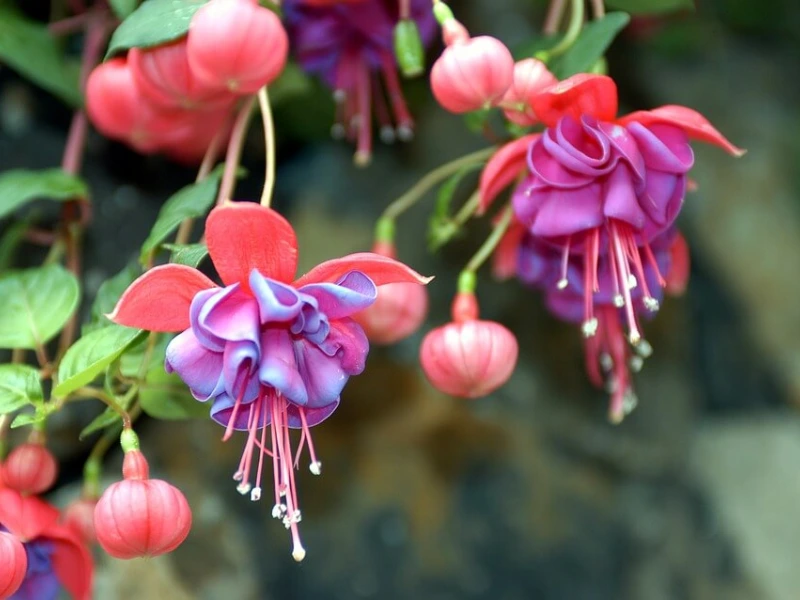Guides
Dark Eyes Fuchsia Care: Tips for Growing a Thriving Plant
If you’ve recently brought home a Dark Eyes Fuchsia or are planning to, you’re probably wondering how to care for it properly. This stunning plant, known for its vibrant flowers and lush foliage, can thrive in your garden or home if given the right care. But like all plants, it has specific needs when it comes to watering, sunlight, soil, and pruning. Whether you’re a seasoned gardener or just getting started, this guide will walk you through everything you need to know about Dark Eyes Fuchsia care for a thriving plant.
Why Choose Dark Eyes Fuchsia?

The Dark Eyes Fuchsia is one of those plants that effortlessly adds beauty and charm to any space. It’s a variety of Fuchsia plants known for its striking, deep-colored blooms, with dark purple petals and contrasting red accents. What makes this plant special is its versatility—perfect for both indoor and outdoor gardening. Whether you’re looking to enhance your garden beds or bring a pop of color to your living room, this plant has you covered.
However, to make sure your Dark Eyes Fuchsia is healthy and blooms consistently, you need to follow some basic care tips. Don’t worry, though — we’ll break it down for you in simple, easy-to-follow steps. Let’s dive in!
1. Understanding the Ideal Growing Conditions for Dark Eyes Fuchsia
Like many plants, Dark Eyes Fuchsia has specific environmental needs to ensure it grows beautifully. Let’s start with the most important factors.
Light Requirements for Dark Eyes Fuchsia
One of the most important aspects of growing Fuchsia plants is light. Dark Eyes Fuchsia plants prefer partial shade. While they can tolerate a bit of sunlight, direct sunlight can scorch the leaves and cause the flowers to wilt prematurely. For optimal growth, aim for a spot that offers morning sunlight and afternoon shade. If growing indoors, place your Fuchsia near a window with bright, indirect light. Too much direct sunlight can cause leaves to turn yellow and dry out, and too little light will result in leggy growth with fewer flowers.
Soil for Dark Eyes Fuchsia
When it comes to soil, Dark Eyes Fuchsia thrives in well-draining soil that retains moisture but doesn’t become soggy. The best option is a loamy mix enriched with organic matter. You can create your own by mixing potting soil with perlite and peat moss. This ensures that your Fuchsia has the proper balance of moisture retention and drainage. Avoid heavy, clay-based soils that tend to retain too much water, as this can lead to root rot.
If growing your Fuchsia in a container, ensure the pot has drainage holes to prevent excess water from accumulating in the soil.
2. Watering Dark Eyes Fuchsia

Watering is one of the most important aspects of Fuchsia care. Overwatering or underwatering can both lead to problems like root rot or poor flowering. Here’s how to get it right:
How Often Should You Water?
The best approach is to check the soil regularly. Water your Dark Eyes Fuchsia when the top inch of the soil feels dry to the touch. The frequency will vary based on factors like temperature, humidity, and container size. During hotter months, your Fuchsia may require more frequent watering, while in cooler months, it will need less.
It’s essential not to allow your plant’s soil to remain too dry or too wet for extended periods. If the leaves start to droop, it’s a sign your plant needs a drink. If you notice yellowing leaves or wilting flowers, it may be a sign of overwatering, and you’ll need to adjust your watering routine accordingly.
3. Fertilizing Your Dark Eyes Fuchsia
To ensure your Fuchsia plant grows strong and produces plenty of blooms, you’ll need to provide it with regular feeding. But don’t overdo it!
Best Fertilizers for Dark Eyes Fuchsia
Fuchsia plants are light feeders, so use a balanced liquid fertilizer (like a 10-10-10 NPK mix) during the growing season (spring through fall). Fertilize every 4-6 weeks, ensuring you follow the instructions on the fertilizer label to avoid overfeeding. Too much fertilizer can encourage excessive foliage growth at the expense of flowers, so keep it moderate.
When winter arrives and the plant enters its dormant phase, stop fertilizing. Fuchsia plants don’t need extra nutrients during this period, and it will help the plant conserve energy.
4. Pruning and Maintenance for Healthy Growth
Pruning not only keeps your Dark Eyes Fuchsia looking neat but also encourages more vigorous growth and more flowers. Let’s take a look at how to prune it properly.
When and How to Prune Dark Eyes Fuchsia
The best time to prune your Dark Eyes Fuchsia is early spring, just before the growing season begins. This will help stimulate new growth and prepare the plant for blooming. Trim back any dead or damaged stems, and if you notice any leggy growth, cut it back to encourage a fuller, bushier shape.
Additionally, it’s essential to regularly remove spent flowers to keep the plant blooming throughout the growing season. This process is called deadheading, and it encourages the plant to focus its energy on new flower production rather than seed development.
5. Common Problems with Dark Eyes Fuchsia (And How to Solve Them)
No matter how carefully you care for your plant, sometimes issues may arise. Here’s how to tackle the most common problems you might encounter.
Yellowing Leaves and Drooping Flowers
If your Dark Eyes Fuchsia is showing yellow leaves or drooping flowers, it could be a sign of overwatering, poor soil drainage, or nutrient deficiencies. To solve this, adjust your watering schedule and ensure your plant isn’t sitting in water. Additionally, consider adding a balanced fertilizer to replenish any lost nutrients.
Pests and Diseases
Dark Eyes Fuchsia is susceptible to pests like aphids, whiteflies, and mealybugs. If you notice these pests, remove them by hand or use an organic insecticidal soap. Regularly check the plant for any signs of pest infestation.
Fungal diseases like powdery mildew can also affect Fuchsia plants, especially if they’re grown in humid environments with poor air circulation. Treat any fungal issues with a fungicide and make sure your plant is not overcrowded.
6. How to Encourage More Blooms from Your Fuchsia Dark Eyes

The beautiful blooms of Dark Eyes Fuchsia are one of its main attractions, but getting it to bloom consistently can sometimes be tricky. Here are some tips for maximizing your Fuchsia’s blooming potential:
Provide Adequate Light
Ensure your Fuchsia is receiving enough light. While it prefers partial shade, make sure it’s still getting some morning sunlight for best blooming. If growing indoors, place it near a bright window with indirect light to encourage flower production.
Prune Regularly
Pruning not only helps shape your plant but also encourages new growth and more blooms. Regularly remove spent flowers and trim back any leggy stems to promote bushier growth and more flowers.
Feed Your Fuchsia for Flowering
Regular feeding with a balanced fertilizer ensures that your Dark Eyes Fuchsia has the nutrients it needs to produce stunning blooms. Avoid over-fertilizing, as this can lead to excessive foliage growth at the expense of flowers.
Maintain Proper Moisture
Fuchsia plants need regular moisture, but overwatering can harm blooming. Be sure to water the plant when the soil feels dry but never let the soil stay soggy. Proper watering helps the plant focus on flowering rather than survival.
7. Propagating Dark Eyes Fuchsia
Want to grow more Dark Eyes Fuchsia plants? It’s easy to propagate them from cuttings.
How to Propagate Dark Eyes Fuchsia
To propagate, take a 4-6 inch cutting from a healthy Dark Eyes Fuchsia plant, remove the lower leaves, and place it in a pot with moist soil. Keep the cutting in a warm, humid environment, and it should develop roots in a few weeks. Once the roots are established, you can transplant the cutting into a larger container or garden bed.
Conclusion
With just a little attention to its growing conditions, watering schedule, and pruning, your Dark Eyes Fuchsia will thrive and reward you with its stunning, vibrant flowers year after year. Whether you’re growing it indoors or outdoors, this shade-loving plant is sure to become a beloved feature in your garden or home.
By following these care tips, you’ll have a healthy, thriving Dark Eyes Fuchsia in no time! Don’t forget to regularly check for pests and ensure your plant is getting the right balance of sunlight, water, and nutrients.
Next Steps:
If you found this guide helpful, check out our other articles on Fuchsia care and discover more gardening tips to help you grow a variety of beautiful, healthy plants in your garden. Ready to get your hands dirty? Head over to your local nursery and pick up a Dark Eyes Fuchsia — your garden will thank you!


7 Vegetables to Plant in December for a Bountiful Winter Harvest
Winter gardening is a challenge many new gardeners shy away from. But if you’re among [...]
Dec
9 Common Christmas Cactus Problems and How to Fix Them
Have you ever walked past your Christmas cactus and wondered why it suddenly looks sad? [...]
Nov
Swedish Ivy Care: How to Grow a Healthy, Thriving Plant
Have you ever looked at your Swedish Ivy and wondered why the leaves are turning [...]
Nov
Avoid These 10 Garlic Planting Mistakes for Bigger, Healthier Bulbs
Growing garlic at home is one of the most satisfying things a gardener can do [...]
Nov
How to Prevent Christmas Cactus Bud Drop: Tips for a Healthy Bloom
Have you ever noticed your beautiful Christmas cactus (Schlumbergera) starting to lose its buds just [...]
Nov
Discover 7 Stunning Types of Night-Blooming Cereus
Have you ever waited for a flower that only opens at night and then disappears [...]
Nov